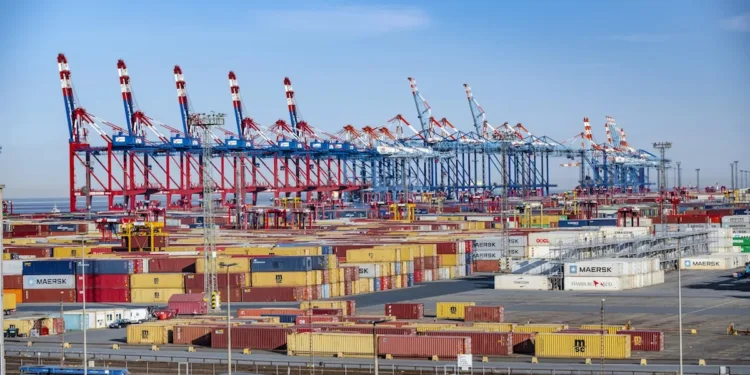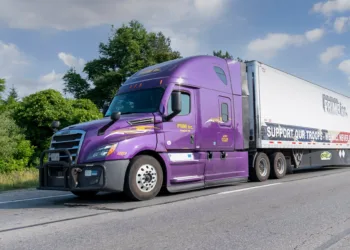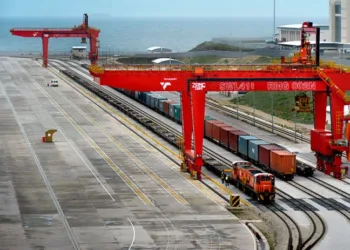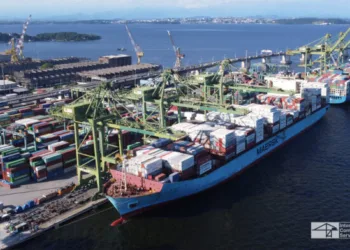The eagerly awaited official framework for the EU-U.S. trade truce has been released, signaling a halt in the escalating tensions that have burdened trans-Atlantic trade, and should help steady container flows, said forwarder Kuehne & Nagel.
While not yet legally enforceable, the agreement maintains the 15% tariff on most European Union exports to the U.S. and the 27.5% duty on automobiles. These tariffs will remain in place until Brussels implements reciprocal tariff reductions on a wide array of American industrial and agricultural products.
For container shipping, the implications are significant but nuanced, said Paolo Montrone, global head of trade, Sea Logistics, for Swiss-based K&N (OTC: KHNGY).
“In the near term, cargo flows on core EU–U.S. lanes should stabilize, particularly for pharmaceuticals, industrial goods, and agricultural commodities spared from further escalation,” Montrone wrote in a note to customers. “This could bring more predictable volumes to carriers serving the North Europe–U.S. East Coast and Gulf routes.”
However, Montrone said a delay in car tariff reductions continues to strain automotive exports, a key driver of high-value westbound cargo.
European car exports to the U.S. dropped 16.8% decline in the first six months of this year from 2024. Germany is the largest European exporter to the U.S., totaling $34.9 billion in vehicles and parts in 2024
It’s also an open question how higher landed costs of EU goods will affect U.S. consumer demand.
“If price sensitivity drives a shift toward more affordable options, where such options exist, domestic or Asian suppliers may gain ground. This could lead to a plateau or even a decline in westbound volumes, particularly in consumer-driven segments such as food, wine, and mid-tier manufactured goods,” he said.
The forwarder’s overall container volumes increased by about 2% in the first half of this year from 2024, but EU to U.S. demand was relatively flat due to currency and tariff effects.
More extensive negotiations aimed at a comprehensive agreement covering standards, digital regulations, and market access could further reshape trade patterns and foster growth, Montrone said. Until then, carriers must contend with a market characterized by policy unpredictability and swift tariff adjustments. This necessitates flexible capacity planning to ensure services remain aligned with fluctuating demand.
Find more articles by Stuart Chirls here.
Related coverage:
Tariff clarity can’t shore up falling ocean container rates
Vast forwarding network helps DP World see surge in first-half profit
South Carolina ports chief resigns, citing ‘personal reasons’
Trans-Pacific container rates fall to pre-Red Sea crisis levels
The post EU-US pact to steady trans-Atlantic trade, forwarder says — with one exception appeared first on FreightWaves.





















